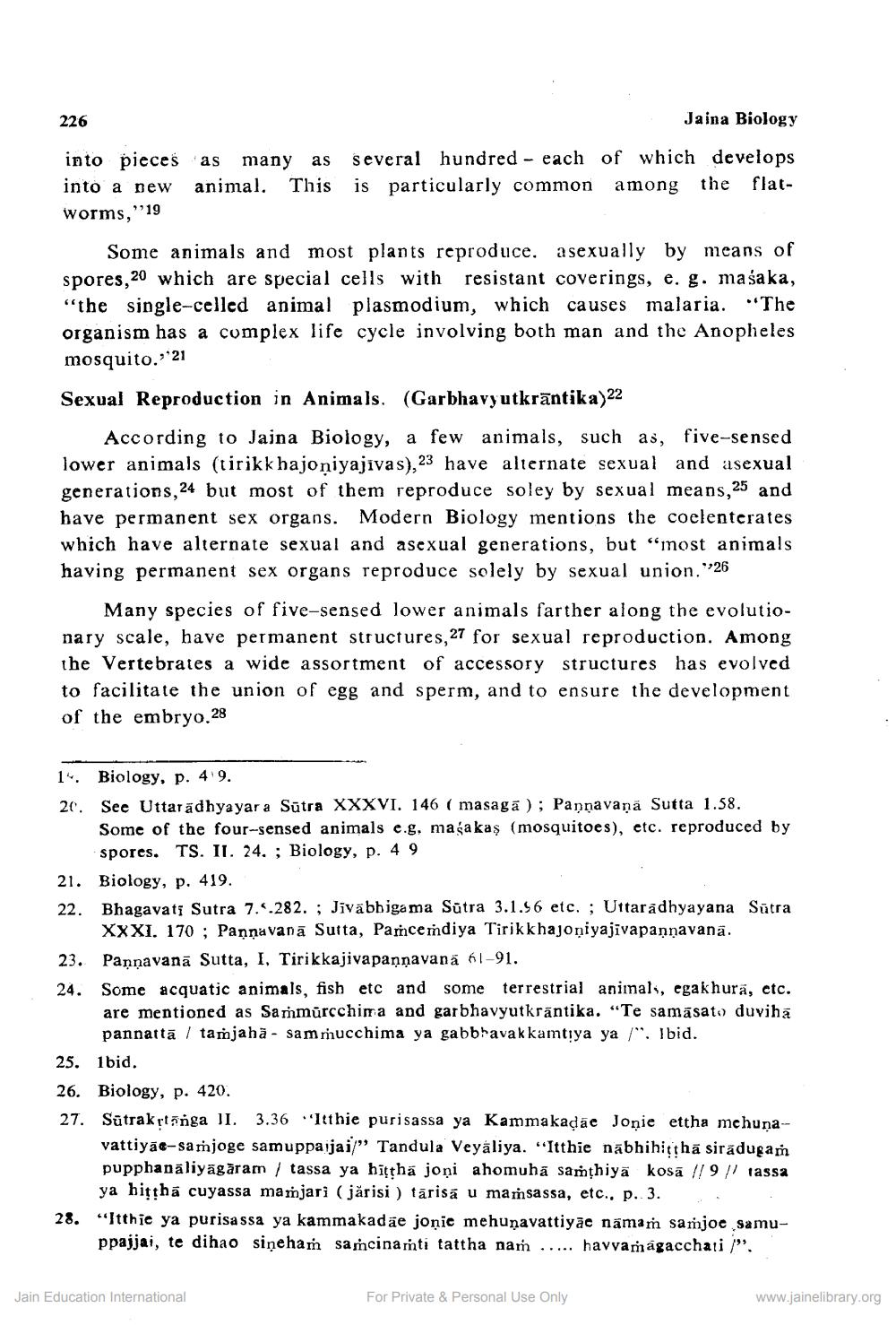________________
226
into pieces into a new worms, "19
Jaina Biology
as many as several hundred each of which develops animal. This is particularly common among the flat
Some animals and most plants reproduce. asexually by means of spores, 5,20 which are special cells with resistant coverings, e. g. masaka, "the single-celled animal plasmodium, which causes malaria. "The organism has a complex life cycle involving both man and the Anopheles mosquito. *21
Sexual Reproduction in Animals. (Garbhavy utkrāntika)22
According to Jaina Biology, a few animals, such as, five-sensed lower animals (tirikk hajoniyajivas), 23 have alternate sexual and asexual generations, 24 but most of them reproduce soley by sexual means,25 and have permanent sex organs. Modern Biology mentions the coelenterates which have alternate sexual and asexual generations, but "most animals having permanent sex organs reproduce solely by sexual union."26
Many species of five-sensed lower animals farther along the evolutionary scale, have permanent structures, 27 for sexual reproduction. Among the Vertebrates a wide assortment of accessory structures has evolved to facilitate the union of egg and sperm, and to ensure the development of the embryo.28
1. Biology, p. 49.
20.
See Uttaradhyayar a Sutra XXXVI. 146 (masaga); Pannavana Sutta 1.58. Some of the four-sensed animals e.g. majakaş (mosquitoes), etc. reproduced by spores. TS. II. 24.; Biology, p. 4 9
21. Biology, p. 419.
22. Bhagavati Sutra 7..282.; Jivabhigama Sutra 3.1.56 etc.; Uttaradhyayana Sūtra XXXI. 170; Pannavana Sutta, Pamcemdiya Tirikkhajoniyajivapanṇavanā.
23. Pannavana Sutta, I. Tirikkajivapannavana 61-91.
24.
Some acquatic animals, fish etc and some terrestrial animals, egakhura, etc. are mentioned as Sammurcchima and garbhavyutkrāntika. "Te samasato duviha pannattā tamjaha sammucchima ya gabbḥavakkamtiya ya ". Ibid.
25. 1bid.
26. Biology, p. 420.
27. Sutrakṛtanga II. 3.36 Itthie purisassa ya Kammakaḍae Jonie ettha mchunavattiyac-samjoge samuppaijai/" Tandula Veyaliya. "Itthie nabhihitṭhā siradugam pupphanāliyāgāram / tassa ya hiṭṭhā joni ahomuha samṭhiya kosa // 9 // tassa ya hittha cuyassa mamjari (jărisi) tarisa u mamsassa, etc., p.. 3.
28. "Itthie ya purisassa ya kammakadae jonie mehuṇavattiyae namam samjoe samuppajjai, te dihao sineham samcinamti tattha nam..... havvamägacchati ".
Jain Education International
For Private & Personal Use Only
www.jainelibrary.org




